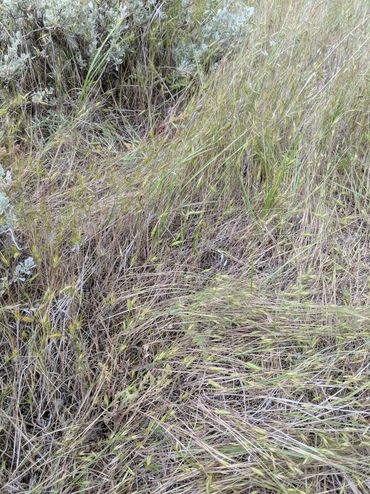Medusahead Rye









Details and Information
Common Names
Medusahead
Description
An aggressive winter annual 6 to 24 inches tall. Leaf blades more or less rolled, generally 1/8 inch wide or less. Inflorescence a long-awned spike that is nearly as wide as long. Mature awns twisted, 1 to 4 inches long, stiff, and minutely barbed.
Key Features
Flowering and seed formation occur in May and June. Sometimes confused with foxtail barley or squirreltail, medusahead can be distinguished by the fact that its spike or head does not break apart as seeds mature and that it is an annual. Instead, individual awned-florets fall away, leaving a bristly head made up of awn-like glumes that will persist over winter. Medusahead seedlings appear similar to downy brome, except the latter is much hairier.
Habitat
Medusahead, introduced from Eurasia, is predominant on millions of acres of semi-arid rangeland in the Pacific Northwest. It is extremely competitive, crowding out even such undesirable species as downy brome. Infested ranches have suffered 40 to 75 percent reductions in grazing capacity.
Control
There are few herbicides available for controlling medusahead. Glyphosate may be effective if non-selective herbicide is desired. For more information on herbicides visit the Weed and Pest office.
Other Facts
Livestock will avoid grazing medusahead even in the seedling stage. It gets its name from the seed head resembling the Greek mythological figure Medusa.
Cookie Policy
This website uses cookies. By continuing to use this site, you accept our use of cookies.